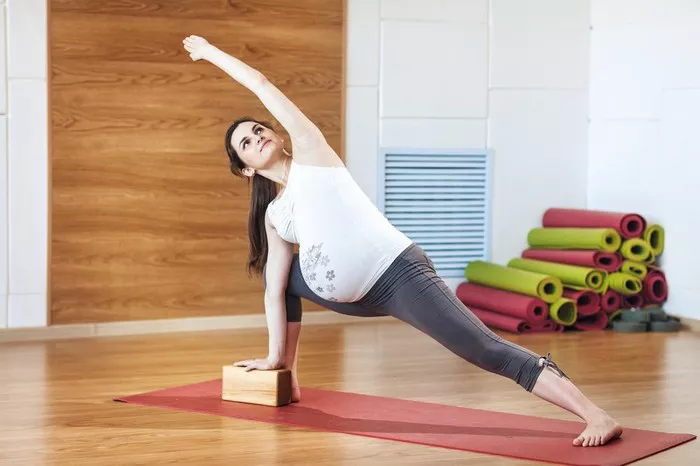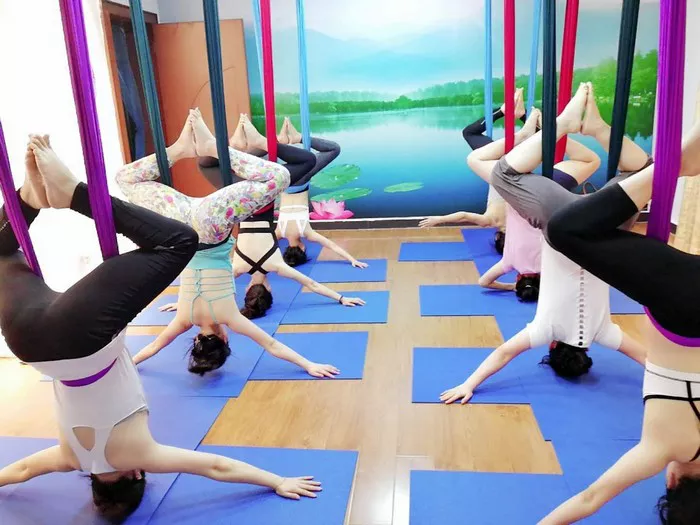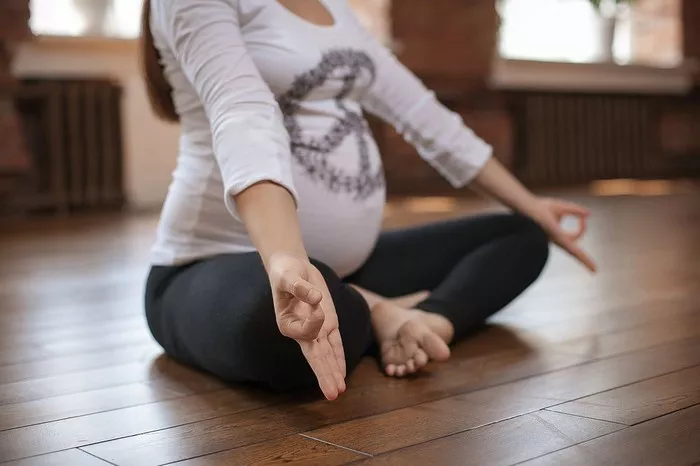The third trimester of pregnancy can be a time of both excitement and physical discomfort for expectant mothers. As your baby continues to grow, so do the physical demands on your body. Prenatal yoga offers a gentle and effective way to stay active, relieve stress, and prepare both your body and mind for childbirth. In this article, we’ll explore five prenatal yoga poses specifically tailored for the third trimester to help alleviate common discomforts and promote overall well-being.
1. Supported Bound Angle Pose (Supta Baddha Konasana)
As your pregnancy progresses, it’s common to experience tightness and discomfort in the hips and pelvis. Supported Bound Angle Pose is a restorative posture that helps to open the hips, relieve tension in the groin area, and promote relaxation.
To practice Supported Bound Angle Pose:
- Begin by sitting on a folded blanket or bolster with your back against a wall for support.
- Bring the soles of your feet together, allowing your knees to fall gently outward.
- Use additional blankets or bolsters under your knees for support if needed.
- Place your hands on your belly or rest them by your sides.
- Close your eyes and focus on deep, slow breaths, allowing your body to relax with each exhale.
- Hold the pose for 5-10 minutes, or as long as feels comfortable.
Supported Bound Angle Pose can help alleviate tension in the hips and pelvis while providing a sense of grounding and relaxation.
2. Cat-Cow Stretch (Marjaryasana-Bitilasana)
The Cat-Cow Stretch is a gentle flow between two poses that helps to release tension in the spine, stretch the torso, and improve flexibility. It also helps to alleviate back pain, a common complaint during the later stages of pregnancy.
To practice Cat-Cow Stretch:
- Start on your hands and knees in a tabletop position, with your wrists directly under your shoulders and your knees hip-width apart.
- Inhale as you arch your back and lift your chest and tailbone towards the ceiling (Cow Pose).
- Exhale as you round your spine, tucking your chin to your chest and drawing your belly button towards your spine (Cat Pose).
- Continue to move between Cow and Cat Pose, synchronizing your breath with each movement.
- Repeat for 5-10 rounds, moving slowly and mindfully.
Cat-Cow Stretch helps to improve spinal flexibility, alleviate back pain, and create space for your growing baby.
3. Supported Side Angle Pose (Parsvakonasana)
Supported Side Angle Pose is a variation of the traditional yoga pose that provides added support for pregnant women. This pose helps to open the hips, stretch the sides of the body, and improve balance and stability.
To practice Supported Side Angle Pose:
- Begin in a wide-legged stance, with your feet parallel to each other.
- Place a block or bolster on the inside of your front foot.
- Bend your front knee and lower into a lunge, placing your hand on the block or bolster for support.
- Extend your opposite arm overhead, reaching towards the ceiling.
- Keep your chest and heart open, and gaze towards the ceiling or sky.
- Hold the pose for 5-10 breaths, then repeat on the other side.
Supported Side Angle Pose helps to relieve tension in the hips and groin, improve circulation, and prepare the body for childbirth.
4. Legs Up the Wall Pose (Viparita Karani)
Legs Up the Wall Pose is a gentle inversion that can help to reduce swelling in the legs and feet, alleviate lower back pain, and promote relaxation. It also helps to improve circulation and reduce fatigue, making it an excellent pose for the third trimester.
To practice Legs Up the Wall Pose:
- Sit sideways next to a wall with your knees bent and your hips close to the wall.
- Lie back and swing your legs up the wall, keeping your buttocks close to the wall.
- Adjust your position as needed to ensure comfort and support.
- Rest your arms by your sides or place your hands on your belly.
- Close your eyes and focus on deep, slow breaths, allowing your body to relax completely.
- Hold the pose for 5-15 minutes, or as long as feels comfortable.
Legs Up the Wall Pose helps to reduce swelling and discomfort in the legs and feet, promote relaxation, and prepare the body for restful sleep.
5. Supported Bridge Pose (Setu Bandhasana)
Supported Bridge Pose is a gentle backbend that helps to open the chest, stretch the spine, and alleviate tension in the lower back. It also helps to strengthen the pelvic floor muscles, which can be beneficial for labor and delivery.
To practice Supported Bridge Pose:
- Lie on your back with your knees bent and your feet hip-width apart, flat on the floor.
- Place a block or bolster under your sacrum for support.
- Press into your feet and lift your hips towards the ceiling, coming into Bridge Pose.
- Keep your knees stacked over your ankles and your thighs parallel to each other.
- Relax your shoulders away from your ears and interlace your fingers underneath your body.
- Hold the pose for 5-10 breaths, focusing on opening the chest and lengthening the spine.
Supported Bridge Pose helps to relieve tension in the lower back, open the chest and heart, and strengthen the pelvic floor muscles in preparation for childbirth.
Conclusion
Incorporating these prenatal yoga poses into your daily routine can help you stay active, reduce discomfort, and prepare both your body and mind for childbirth. Remember to listen to your body and modify the poses as needed to ensure comfort and safety. Always consult with your healthcare provider before starting any new exercise routine, especially during pregnancy. With regular practice, prenatal yoga can be a valuable tool for promoting a healthy and happy pregnancy.






















